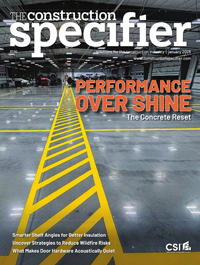New connected lighting technologies bring opportunities and challenges

Central or distributed control?
Another decision point in the design of a CLS is the control type. Control can be centralized where one component is the ‘intelligence’ in the system, collecting all the data, and sending out all the control instructions. The risk with this option is everything shuts down if the centralized control system experiences a failure.
With distributed control, the ‘intelligence’ is pushed down fully or partially to the individual devices making up the system. These devices are now capable of interpreting the input signal sent to them and acting on it directly. Control is programmed right into the receiving devices, eliminating the possibility of a central point of failure for the system.
Installation
Basic systems can be easily set up with simple actions such as pushing buttons on device/module to handheld ‘remotes’ to smart phone apps, and can be done by the installer or end-user. Many panel-based systems also can be set up and programmed this way. However, when it scales up to large networkable systems then the services of a factory-trained technician(s) may have to be contracted. With controls becoming commonplace in lighting many electrical contractors are beginning to include that skillset in their team and they get them trained in systems they frequently use.
Specification
There are many ways to include CLS in contract documents. Devices/modules integral to the luminaire are shown in the luminaire catalog numbers and detailed in the description. If they are external to the luminaire then they have to be listed separately. As the system gets scaled up from a standalone to networkable, the list of components gets longer with many of them likely being shared between the luminaries.
Challenges
As with any technology, CLS has its challenges. It is critical for the specifier to truly understand a customer’s needs and level of sophistication to ensure the proper applications are installed to maximize the benefit and fit the end-user. Also, CLS technology comes with a price—there needs to be a tangible return on investment (ROI) for its deployment to make sense. This ROI can come in the form of reduced energy use, more effective security of valuable assets, and an enhanced, productive work environment.
In August 2019, the University of Oregon published a whitepaper, “The Impact of Lighting and Views in the Workplace of the Future,” which concludes daylighted spaces with controlled lighting and views can improve occupant well-being, workplace productivity, and satisfaction by positively influencing various physiological and psychological processes. The researchers concluded, “lighting and views also impact property value and employee recruitment and retention.”
The first word in CLS is ‘connected’—this likely means integration with IT systems. It is best to engage the IT department from the start to make sure CLS is set up in a way they can support and protect, as well as ensure all components can be integrated. Attention needs to be paid to cybersecurity, as no one wants CLS to be the ‘weak link’ allowing hackers to get into the network.
Further, there will be privacy concerns. People want to know who is getting tracked, and why. When data is being collected on individuals, who is the owner of that data? What rights do the monitored people have? Many of these questions are going to be tested and explored in the coming years.
Future of CLS
CLS are a new-enough technology that its benefits are still being evaluated and debated. The United States Department of Energy has set up a Connected Lighting Test Bed to evaluate CLS. While the definitive benefits are still being researched, the components and their potential are well understood.
Clearly, smart buildings are here to stay, and the acceptance of smart home technology is setting the end-users’ expectations. IoT is already upon us, and CLS are going to have an increasingly significant role to play in future building construction and renovation projects.






